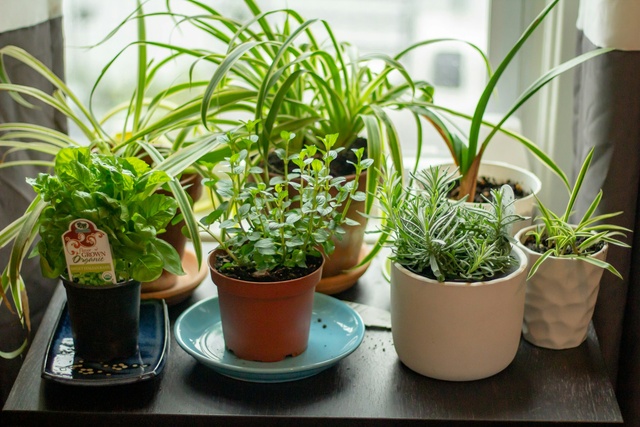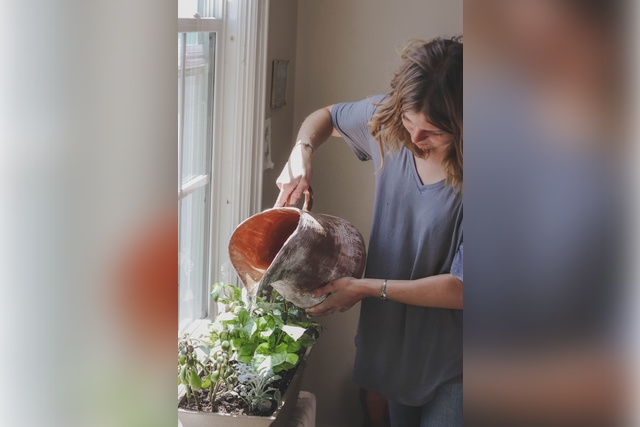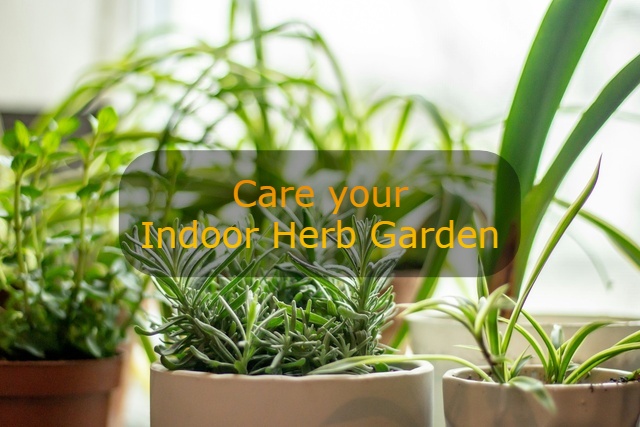Imagine stepping into your kitchen and plucking fresh basil for your pasta or mint for your tea—all from your very own indoor herb garden. Growing herbs indoors is not only convenient but also rewarding. However, knowing how to care for an indoor herb garden is key to keeping your plants healthy and vibrant. In this guide, we’ll walk you through every step, from choosing the right herbs to troubleshooting common issues. Let’s get started!
Why Choose an Indoor Herb Garden?
Indoor herb gardens are perfect for urban dwellers, cooking enthusiasts, and anyone who loves fresh, aromatic herbs year-round. They save money, reduce plastic waste from store-bought herbs, and add a touch of greenery to your home. Plus, caring for an indoor herb garden is easier than you think—once you know the basics.

Selecting the Right Herbs for Your Indoor Garden
Not all herbs thrive indoors, so choosing the right ones is crucial. Some of the best herbs for indoor gardening include:
- Basil: Loves warmth and sunlight.
- Mint: Grows vigorously and prefers indirect light.
- Parsley: Hardy and adaptable to indoor conditions.
- Thyme: Drought-tolerant and low-maintenance.
- Chives: Easy to grow and perfect for beginners.
When selecting herbs, consider your cooking preferences and the growing conditions you can provide.
How to Care for an Indoor Herb Garden: Essential Tips
Caring for an indoor herb garden involves more than just watering. Here’s a detailed breakdown:
a. Provide Adequate Light
Herbs need plenty of light to thrive. Place them near a south-facing window where they can get 6-8 hours of sunlight daily. If natural light is limited, invest in grow lights. LED or fluorescent lights work well and should be placed 6-12 inches above the plants.
b. Water Wisely
Overwatering is a common mistake. Most herbs prefer slightly moist soil, but they don’t like to sit in water. Check the soil’s moisture level by sticking your finger about an inch deep. If it feels dry, it’s time to water. Use pots with drainage holes to prevent root rot.
c. Choose the Right Soil
Herbs thrive in well-draining soil. Use a high-quality potting mix designed for container gardening. Avoid garden soil, as it can compact in pots and hinder root growth.
d. Maintain Proper Humidity
Indoor environments can be dry, especially in winter. Herbs like basil and parsley appreciate higher humidity. Mist your plants occasionally or place a tray of water near them to increase moisture levels.
e. Fertilize Regularly
Herbs grown indoors need nutrients to stay healthy. Use a balanced, water-soluble fertilizer every 4-6 weeks during the growing season. Avoid over-fertilizing, as this can lead to weak growth and less flavor.
f. Prune and Harvest Often
Regular pruning encourages bushier growth and prevents herbs from becoming leggy. Always harvest from the top, cutting just above a leaf node. This promotes new growth and keeps your plants productive.
Common Challenges and How to Overcome Them
Even with the best care, you may encounter some challenges. Here’s how to tackle them:
a. Pests
Indoor herbs can attract pests like aphids and spider mites. Inspect your plants regularly and remove pests by spraying them with water or using insecticidal soap.
b. Leggy Growth
Leggy herbs are a sign of insufficient light. Move your plants to a brighter spot or supplement with grow lights.
c. Yellowing Leaves
Yellow leaves can indicate overwatering, poor drainage, or nutrient deficiency. Adjust your watering schedule, ensure proper drainage, and fertilize as needed.
Creative Ways to Use Your Indoor Herbs
Once you’ve mastered how to care for an indoor herb garden, it’s time to enjoy the fruits of your labor. Here are some ideas:
Related Article: The Best Houseplants for Your Kitchen
- Add fresh basil to homemade pizzas and pasta dishes.
- Brew mint leaves for refreshing teas or cocktails.
- Sprinkle chopped chives over soups and baked potatoes.
- Use thyme and rosemary to season roasted vegetables and meats.

Seasonal Care for Your Indoor Herb Garden
Herbs have different needs depending on the season. In summer, they may need more frequent watering, while in winter, they may require less. Adjust your care routine accordingly to keep your herbs thriving year-round.
Tools and Supplies You’ll Need
To care for your indoor herb garden effectively, gather these essentials:
- Pots with drainage holes
- High-quality potting mix
- Grow lights (if needed)
- Watering can with a narrow spout
- Pruning shears or scissors
- Fertilizer
Frequently Asked Questions About Indoor Herb Gardens
Q: How often should I water my indoor herbs?
A: It depends on the herb and the environment. Generally, water when the top inch of soil feels dry.
Q: Can I grow herbs indoors without sunlight?
A: While herbs prefer sunlight, you can use grow lights to provide the necessary light.
Q: Why are my herbs turning yellow?
A: Yellowing leaves can be caused by overwatering, poor drainage, or nutrient deficiency.
Conclusion
Learning how to care for an indoor herb garden is a rewarding journey that brings fresh flavors and greenery into your home. By providing the right light, water, and nutrients, you can enjoy a thriving herb garden year-round. Whether you’re a seasoned gardener or a beginner, these tips will help you grow healthy, aromatic herbs with ease. Start your indoor herb garden today and transform your cooking and living space!

